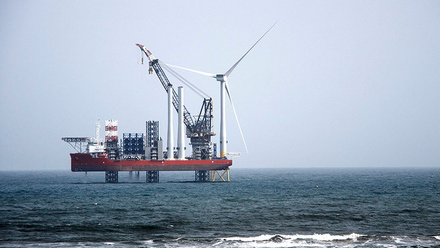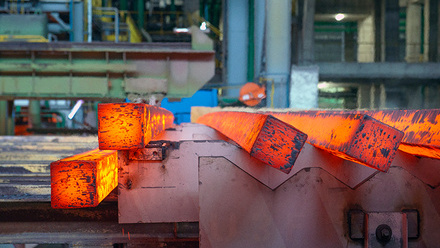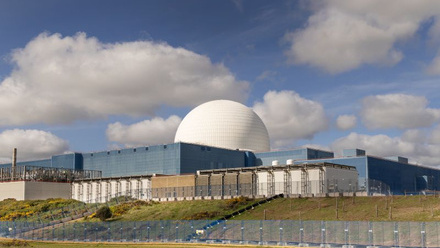Are we still headed to net zero?
Where we are on the journey to net-zero and are we asking the right questions?

The growth of cleaner energy sources continues apace, with around 700GW of renewable power capacity installed in 2024, according to the International Energy Agency’s (IEA) Global Energy Review 2025. Combined with nuclear power, at its fifth-highest level in 30 years, these capacity additions accounted for 80% of the global increase in electricity demand, which in turn constituted 40% of global power generation.
Companies across industries remain committed to rolling out ethically sound, lower-carbon products. However, this growth coincides with increased energy demand growth of 2.2% in 2024, with the majority being led by the global power sector, which grew by 4.3%, reports the IEA. Developing economies made up 80% of this growth.
The ambitious race to achieve net-zero by 2050, at the latest, has therefore intensified. This was envisioned as the path to a sustainable future, though now it seems to be encountering significant geopolitical and socio-economic headwinds.
Has the battle for net-zero been lost? Absolutely not, but success requires a course correction.
While the urgency to combat climate change remains, key players in oil and gas, mining, governments and even consumer industries are retreating from their net-zero commitments and focusing on conventional energy supplies.
Major oil companies that once championed their green ambitions are now scaling back renewable energy investments, resulting in multi-billion-pound reductions in capital, as they prioritise fossil-fuel production. These moves undermine global climate goals and reflect the need for profitability. Simply put, the investment propositions are not sufficiently attractive to replace the risk-versus-return frameworks expected by shareholders of these companies.
Even leaders in the renewables sector are scaling back ambitious building plans, largely due to supply chain constraints, as evidenced by wind tender failures in Denmark, the Netherlands, Germany and the UK over the last 18 months.
It’s not necessarily a step backwards, it’s the realisation that the energy transition centres on one key factor – cost (and affordability).
Security of supply and sustainability add layers of complexity from risk and opportunity perspectives, but ultimately it all boils down to cost.
The cost conundrum
Renewable energy sources like wind, solar and hydrogen offer immense promise, but their adoption comes with significant financial challenges. Green hydrogen costs are now typically €3-10/kg, far higher than grey hydrogen at €1-2/kg, according to PwC’s Analysing the future cost of green hydrogen article.
Wind turbine prices have risen since 2020, as pressure on supply chains has intensified. Although global solar panel costs are decreasing, trade barriers and supply chain disruptions remain as long-term risks.
Only those consumers who invested in residential rooftop solar and/or heat pumps have felt the expected reduction in energy costs from large-scale renewable roll-out. This is down to the UK’s merit order power pricing structure. The marginal price – which sets the overall wholesale price for the power market – is heavily reliant on gas as a fuel source. As we have seen, this has been volatile over the last few years.
Historically, new cleaner fuels have achieved long-term, sustainable market penetration with a premium pricing of 10-20% versus the incumbent energy source. However, this usually comes with added and readily observable benefits, such as piped natural gas instead of liquefied petroleum gas for residential use and coal for industrial use.
The piped gas is safer to use, more flexible and has lower emissions. However, it requires significant infrastructure investment.
Similarly, renewables for increased electrification are touted as being lower cost, particularly solar – this is certainly true if we simply look at the solar investment in isolation. For wind, there are increasing supply chain and financing costs that are eroding their cost advantage.
Also, significant resilience needs to be built into the electrical system to provide power when the sun does not shine and/or the wind does not blow, and/or to store energy that currently has to be curtailed when there is an oversupply of renewable power on the grid.
Governments are coming to terms with renewable technologies and free-energy markets, requiring subsidies or structural changes in pricing models to compete with conventional fuels that can provide energy on a reliable and flexible basis.
However, they are also realising that their economies’ ability to sustain these subsidies are limited. In the end, the consumer will pay through either higher-priced energy costs and/or increased taxation.
For example, increased taxation, emissions credits and higher consumer prices must fund subsidies from the Contract for Difference pricing structure (or similar) used to support wind, solar, hydrogen and carbon capture.
Investment in the energy ecosystem is also required to provide energy storage, increase transmission infrastructure and system back-up supplies, like batteries and gas-fired power.
This is in addition to reconfiguring an energy infrastructure system that has evolved for more than a century within 30 years.
Energy markets must also be restructured to reflect some form of cost-plus pricing model to allow renewables to freely compete and bring down costs for the end consumer.
Policy reversals and reduced funding for climate initiatives are stalling progress worldwide. For instance, the freezing of funds from landmark climate bills in the US has hampered critical clean-energy projects.
Similarly, the UK Government has faced criticism for approving new oil and gas exploration projects in the North Sea, sending conflicting signals about its net-zero commitment by 2050.
Public-private partnerships can mitigate financial risks while accelerating clean-energy project deployments. Again, a key success factor will be how to reduce the need for government subsidies. Denmark’s wind energy success exemplifies effective collaboration, but even that model is now starting to reach its limits.
Furthermore, strengthening education and workforce development ensures a skilled labour force capable of building and maintaining renewable systems.
A balance needs to be found. Investors need to see sustained long-term, cross-party stability on energy policy that incentivises low-carbon infrastructure investment, while maintaining a managed transition from conventional energy supplies that are playing an increasingly important role in energy security.
The UK Government’s consultation on the clean energy future of the North Sea, which IOM3 has responded to, is a step in the right direction, but we must hope for a balanced and managed future as a result.
The question we should be asking is, how do we redesign our energy systems to be more cost effective, efficient, attractive to investors, as low carbon as possible and provide security of supply?
The answer lies in a diverse mix of sources with stable policies and differing pricing mechanisms to attract investment by energy type.
Maintaining momentum
Wind turbines, solar panels and electric vehicles depend heavily on critical minerals like lithium, cobalt and rare-earth elements.
To sustain the energy transition’s pace, we must ask whether we are truly posing the right questions and focusing enough on the role materials, minerals and mining play. Advances in this field offer promising alternatives, such as batteries designed to minimise reliance on scarce minerals and recycling technologies that extract materials from discarded devices.
Lithium-ion batteries power everything from electric vehicles to grid storage and rely on the availability of high-quality lithium supplies concentrated in a small number of sources.
Affordable and durable battery-storage systems are also needed to address renewable energy’s intermittent nature. We must find different sources and invest more on research for alternative technologies.
Mining these resources sustainably also poses significant challenges. Environmental concerns, labour practices and geopolitical tensions all shape the supply chain. For example, the U.S. Geological Survey, Mineral Commodity Summaries, January 2024 claims 74% of the world’s cobalt is sourced from the Democratic Republic of Congo, raising ethical questions around mining.
For renewable energy to remain competitive, major advancements must be made in reducing costs, enhancing efficiency and scaling up deployment. Technological breakthroughs in wind turbine designs – such as stronger, longer-life turbine blades, longer-lasting gearbox designs and end-of-life recyclability – and next-generation solar panels are essential.
For instance, instead of merely increasing subsidy levels for solar developments, the government could pursue policies prioritising research to produce cheaper, more efficient, solar panels manufactured in the UK. Imagine panels that are half the cost to produce and install, but twice as efficient as current monocrystalline models. Such innovations would drive adoption rates higher.
In addition, sourcing materials within the UK would improve energy security, a promising area highlighted in the UK Government’s recent activity on critical minerals. However, this focuses heavily on securing supplies rather than what should we be doing differently that can provide a near-term gain.
Small modular reactor (SMR) technology is potentially a game-changer, which can meet some of the UK’s flexible low-carbon power requirements that are currently filled by gas-fired power. The roll-out of these SMRs needs to accelerate, particularly as the world leader in this technology is Rolls-Royce.
Strategic investments in R&D need be prioritised, especially within universities. Breakthroughs in green-hydrogen production, such as cheaper electrolysers and low-cost catalysts, could vastly improve viability. Yet, fundamental questions need answering when investing in low-carbon hydrogen. What is green hydrogen’s market? Should it replace grey hydrogen? Would electrification solutions better serve its end-use applications? In cases where green hydrogen production loses 30-40% of energy compared to wind or solar direct electrification, does the former make economic sense?
Far too much capital and too many subsidies have been aimed at expanding green hydrogen’s uses into areas that do not make scientific and/or financial sense. We should be concentrating on using it to replace existing hydrogen uses derived from fossil fuel, like fertilisers.
What about fossil fuels?
Let’s be clear on two points: the goal of the energy transition is to reach a future – beyond net-zero in 2050 – where the burning of fossil fuels is globally minimised. However, fossil fuels, particularly oil and gas, must remain key components of energy markets until viable alternatives can take their place. The pressing questions are, how can we reduce fossil fuel consumption and how can industry be made less carbon intensive?
In the near-term, solutions lie in improving energy efficiency, like designing more energy-efficient products, enhancing home insulation and embracing the circular economy through reuse and recycling of materials.
Furthermore, the UK should secure the development of its national fossil fuel resources at a time of heightened geopolitical tensions. For natural gas production, this has the added benefit of minimising the emissions associated with liquefied natural gas imports. If carbon capture and storage can be made more economically attractive, this could lead to a sustained presence of gas-fired power in the energy mix.
Coal still has a niche role to play in the UK, as highlighted by the recent crisis with British Steel. So, again, the question is, until commercially viable alternatives exist, how can we use coal in an efficient way, while minimising emissions to continue producing high-quality steel that cannot currently be produced using electrification options?
A call to action
The energy transition is at a pivotal juncture. The retreat of oil companies and governments, combined with economic challenges for renewable technologies, and the difficulty of securing critical materials, threatens progress. Yet, the stakes are too high to abandon the pursuit of a sustainable future.
Stakeholders, including corporations, policymakers and individuals, must not lose momentum on the net-zero agenda. Instead, they should embrace advancements in materials science and address barriers to the adoption of clean energy.
The time for hesitation is over. The energy transition demands bold action, unwavering commitment and a collective resolve to overcome the challenges ahead. This sentiment has been echoed at numerous COP meetings by governments and industry leaders alike, growing louder since 2020.
What needs to change? We must not shy away from asking the difficult questions.
First, how can we make energy transition solutions more economically attractive without the need for subsidies? Next, what role can materials, minerals and mining play to make this happen in an economically attractive way?
Asking hard questions
To keep the energy transition on track, we need to ask critical questions:- Policy and governance – how can governments establish consistent, long-term policies that encourage renewable investments while phasing out fossil fuels? What mechanisms can hold corporations and nations accountable for retreating from net-zero commitments? This needs to be co-ordinated across nations in a much stronger way.
- Economic accessibility – how can the costs of renewable technologies, such as wind and solar, be reduced to compete with fossil fuels? What financing models can enable developing countries to leapfrog into clean-energy systems?
- Infrastructure and scalability – what upgrades do energy grids need to integrate decentralised and variable renewable sources? How can we expedite the deployment of battery storage, nuclear small modular reactors, incremental transmission and hydrogen infrastructure?
- Material security – how can we secure sustainable and ethical supply chains for critical minerals, and what role can recycling play? What innovations in materials science can minimise reliance on scarce resources?
- Science vs reality – do the new technologies make sense to deploy at scale, and are they reflecting the scientifically achievable outcome rather than an emotionally desirable one? This is an incredibly important question to ask with respect to hydrogen.
- Public engagement – how can individuals and communities be empowered to engage in the energy transition? What strategies can inspire behavioural changes and garner public support for clean-energy policies?








